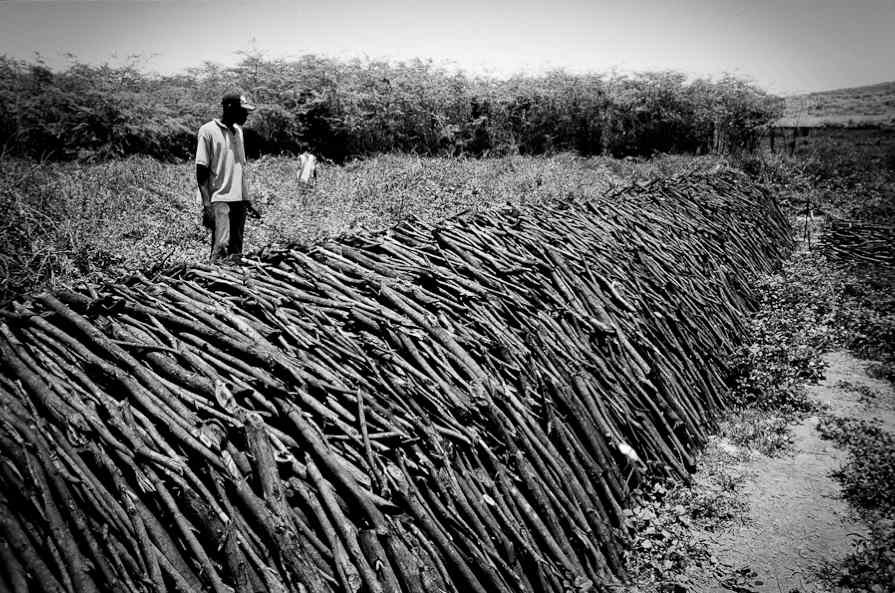
Wasteland: Charcoal in Haiti
Black and white photos of the people and lands of Haiti serve as a poignant reminder of Haiti's current deforestation crisis, and the charcoal market is exposed as the main contributor to this problem.
Jonathan Auch
FEBRUARY 13 - APRIL 30, 2016
Displayed in conjunction with Cutting Down the Tree of Life.
Although the extent of Haiti’s deforestation is debated, reliable sources claim that only two percent of the country remain forested. Deforestation was not solely caused by land clearing for coffee, sugarcane, cotton, cacao, and other cash crops. Haitians have also had to cut down their own trees for charcoal production, as revealed in this gallery by photographer Jonathan Auch.
To make charcoal, Haitians put the cut wood into a large pit, set it all on fire, then cover the pit with leaves or dirt to limit the oxygen around the fire. The resulting product is almost entirely carbon. Charcoal, when burned, gives significantly more heat than wood, and when searching for fuel for their stoves, over ninety percent of Haitians use charcoal; alternative fuel sources are scarce and too expensive.
Self-taught photographer Auch (born 1984) studied painting, design, and illustration in college before taking a break, disillusioned and tuition-poor. He headed to Europe with an old Nikon camera, newly bought. A Robert Capa retrospective in Berlin ignited his creative imagination. He returned to New York City, began to research photographers who made a difference, and hounded war photographer James Nachtwey until he got hired as his exhibition and publications printer and assistant. Auch also worked for Bruce Gilden, famous for his candid close-ups of people on the street.
As a freelance photographer, Auch does photo and video reportage on a variety of political and cultural issues, from Occupy Wall Street to Hurricane Sandy. He seeks iconic moments revealing alienation, isolation, loneliness, or discrimination. He often uses inexpensive point-and-shoot cameras, and as seen in this gallery, experiments with noticeable grain, start contrast, and blurriness, finding Papa’s and Daidō Moriyama’s unsharp photos evocative and compelling. Auch is known for his distinctive, gritty street photographs and his straightforward portraits reminiscent of formal mugshots.
Auch‘s residency and exhibition were generously underwritten by the Attaway Professorships in Civic Culture Program.




